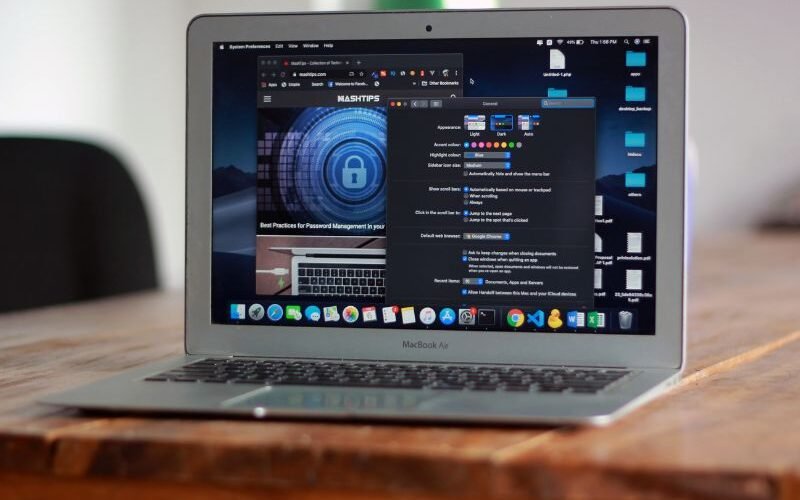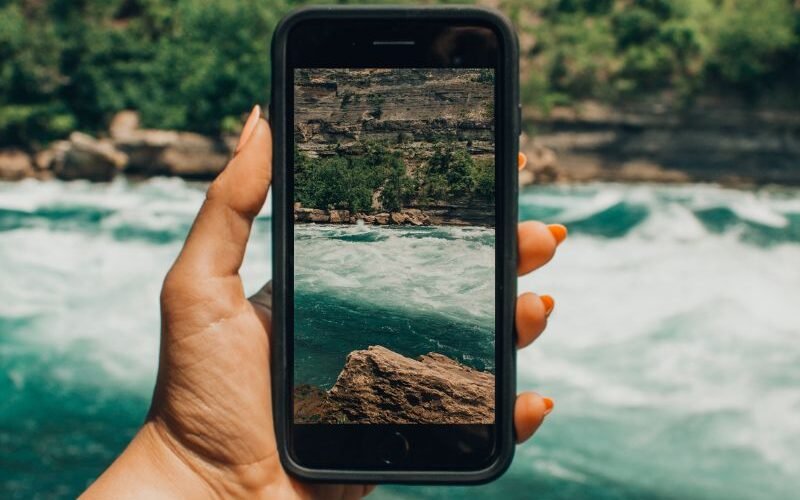In the past, professional photo editing required hours of meticulous work, expert knowledge of software like Adobe Photoshop, and a keen eye for detail. Today, artificial intelligence (AI) has revolutionized the process, making advanced editing accessible to everyone—from casual smartphone users to professional photographers. AI-powered apps can automatically enhance colors, remove unwanted objects, retouch portraits, and even generate entirely new elements in an image, all with just a few taps.
The rise of AI in photo editing has democratized creativity. No longer do users need to master complex tools or spend hours adjusting sliders. Instead, machine learning algorithms analyze images and apply corrections intelligently, producing stunning results in seconds. Whether you’re looking to restore old photos, create social media-ready images, or experiment with artistic effects, 5 Best AI App To Edit Photos provide an effortless solution.
This article explores the best AI-powered photo editing apps available today, their standout features, and how they compare in terms of ease of use, functionality, and affordability. By the end, you’ll have a clear understanding of which AI editor suits your needs—whether you’re a beginner, a content creator, or a professional looking to streamline your workflow.
Why Use AI for Photo Editing?
AI has transformed photo editing by automating tedious tasks while delivering professional-quality results. Unlike traditional editing, which requires manual adjustments, AI-powered apps analyze images and apply enhancements instantly. For example, they can detect faces and automatically smooth skin, brighten eyes, and whiten teeth—features that once required painstaking effort in programs like Photoshop.
Beyond basic touch-ups, AI enables advanced editing capabilities that were previously unimaginable. Apps can now remove unwanted objects seamlessly, replace backgrounds with a single click, and even generate realistic elements to fill in missing parts of an image. Some AI tools also specialize in restoring old or damaged photos, sharpening blurry images, and upscaling low-resolution pictures without losing quality.
The biggest advantage of AI photo editing is its accessibility. You don’t need to be a tech expert or a graphic designer to achieve stunning results. With intuitive interfaces and automated suggestions, these apps make high-quality editing available to anyone with a smartphone or computer. Whether you’re editing vacation photos, creating marketing materials, or just having fun with filters, AI simplifies the process while expanding creative possibilities.
5 Best AI App To Edit Photos
1. Adobe Photoshop (Firefly AI) – The Professional’s Choice
https://www.adobe.com/products/photoshop.html
Adobe Photoshop has been the gold standard in photo editing for decades, and its Firefly AI integration has elevated it even further. The Generative Fill tool is revolutionary—simply highlight an area, type a text prompt (e.g., “add a sunset” or “remove this person”), and Photoshop’s AI generates realistic edits. This feature is a game-changer for photographers and designers who need to extend backgrounds, remove distractions, or add elements seamlessly.
Another standout is Neural Filters, which allows for non-destructive AI-powered adjustments. Want to change a subject’s facial expression, reduce aging effects, or apply artistic styles? These filters make it possible with just a slider. Photoshop’s AI also assists with auto-selection tools, making it easier to isolate subjects, hair, or complex objects without manual masking.
While Photoshop requires a subscription (part of Adobe’s Creative Cloud), its AI capabilities justify the cost for professionals. However, beginners might find it overwhelming—thankfully, Adobe offers tutorials to help users master these powerful tools.
2. Lensa AI – The Selfie & Portrait Powerhouse

Lensa AI has taken social media by storm, particularly for its Magic Avatars feature. Upload 10-20 selfies, and the app generates 50+ stylized AI portraits in themes like fantasy, cyberpunk, or anime. These aren’t just filters—Lensa uses Stable Diffusion-based AI to reimagine your face in different artistic styles, making it a hit for profile pictures and digital art.
Beyond avatars, Lensa excels at one-touch portrait retouching. Its AI detects faces and automatically smooths skin, brightens eyes, whitens teeth, and reshapes facial features—without making the subject look overly edited. The app also includes background blurring and replacement, making it ideal for influencers, content creators, and anyone who wants Instagram-ready photos in seconds.
Lensa operates on a freemium model: basic edits are free, but Magic Avatars and premium retouching require a subscription. Some users criticize its pricing, but the results are undeniably impressive.
3. Remini – The Photo Restoration Wizard
Ever wished you could turn a blurry, decades-old family photo into a crisp, high-resolution image? Remini makes it possible. Using AI-powered upscaling, the app can transform low-quality pictures into sharp, detailed versions—perfect for restoring vintage photos or improving grainy smartphone shots.
Remini’s AI colorization feature breathes life into black-and-white images by adding realistic colors to skin, clothing, and scenery. It also offers face enhancement, fixing blurry facial details and even reconstructing missing features in damaged photos. Many users have used Remini to digitally restore old wedding pictures, childhood photos, and historical images with stunning accuracy.
The free version has ads and watermarks, while the Pro version processing and batch editing. It’s a must-try for anyone with cherished old photos that need reviving.
4. PicsArt – The All-in-One Creative Suite
PicsArt blends AI-powered editing with social media-friendly creativity. Its AI Background Remover is one of the fastest ways to delete or replace backgrounds—ideal for product photos, memes, or profile pictures. The app also includes AI Style Transfer, turning ordinary photos into artwork mimicking famous painters like Van Gogh or Picasso.
What sets PicsArt apart is its AI-generated stickers and text effects. Users can type a phrase (e.g., “space neon text”), and the AI creates customizable 3D designs. The app also offers AI-powered collages, Reels editing tools, and even AI-generated art prompts, making it a favorite among TikTok and Instagram creators.
PicsArt is free with ads, but a Gold subscription ($5.99/month) removes watermarks and unlocks premium filters. It’s less advanced than Photoshop but far more accessible for casual users.
5. Canva (Magic Edit) – The Best for Quick & Polished Designs

Canva isn’t just for graphic design—its Magic Edit AI tools make photo editing effortless. The Background Remover instantly isolates subjects, while Magic Eraser deletes unwanted objects with a brush stroke. The newest feature, Magic Edit, lets users replace or add elements using text prompts (e.g., “change the sky to sunset” or “add a bouquet of flowers”).
Canva’s AI also suggests auto-enhancements for lighting, color, and sharpness, making it perfect for marketers, bloggers, and small businesses needing quick, professional visuals. While it lacks Photoshop’s depth, its drag-and-drop simplicity and huge template library streamline workflow.
The free version covers basic edits, while Canva Pro ($12.99/month) unlocks advanced AI tools and 100+ million stock assets.
Which One Should You Choose?
- Professionals: Adobe Photoshop (Firefly AI)
- Selfies & Avatars: Lensa AI
- Restoring Old Photos: Remini
- Social Media Creators: PicsArt
- Quick Business Graphics: Canva
Each app excels in different areas, so your choice depends on your needs—whether it’s precision editing, creative fun, or reviving memories. Try a few and see which AI photo editor works best for you!
Key AI-Powered Features in Photo Editing
1. Auto-Enhancement
AI can instantly adjust lighting, contrast, and colors to make photos look more vibrant. Apps like Adobe Light room and Google Photos use AI to analyze images and apply optimal corrections without manual input.
2. Background Removal & Replacement
Tools like Remove.bg and PicsArt use AI to detect subjects and separate them from backgrounds in seconds. This is invaluable for e-commerce product photos, graphic design, and creative projects.
3. Face Retouching
AI portrait editors (e.g., Facetune, Lensa) automatically smooth skin, whiten teeth, reshape facial features, and even apply virtual makeup—ideal for influencers and photographers.
4. Style Transfer & Artistic Filters
Apps like Prisma and DeepArt transform photos into paintings mimicking famous artists’ styles (Van Gogh, Picasso) using neural networks.
5. Generative AI for Object Removal/Addition
Photoshop’s Generative Fill and Stable Diffusion integrations allow users to add or remove objects realistically by typing commands (e.g., “remove tourist,” “add a waterfall”).
Pros and Cons of AI Photo Editing Apps
Pros:
✅ Saves Time – Edits that took hours now take seconds.
✅ User-Friendly – No advanced skills needed.
✅ Advanced Capabilities – Object removal, AI-generated art, and restoration go beyond traditional editing.
Cons:
❌ Subscription Costs – Many top apps (Photoshop, Lensa) require monthly payments.
❌ Over-Editing Risks – AI can make photos look unnatural if overused.
❌ Privacy Concerns – Some apps upload images to cloud servers for processing.
How to Choose the Right AI Photo Editor?
- For Professionals: Adobe Photoshop (Firefly AI) offers the most control.
- For Social Media & Selfies: Lensa AI or Facetune.
- For Restoring Old Photos: Remini.
- For Quick & Creative Edits: PicsArt or Canva.
- Budget Considerations: Some apps offer free tiers (Canva, PicsArt), while others require subscriptions (Photoshop, Lensa).
The Future of AI in Photo Editing: Breakthroughs and Ethical Challenges
1. Real-Time AI Editing: The Instant Enhancement Revolution
Smartphone cameras already use AI for real-time portrait mode, night mode, and HDR adjustments, but future advancements will take this further. Imagine:
- Live skin retouching during video calls (already appearing in apps like Zoom)
- AI-powered composition guides that suggest crops and filters as you frame a shot
- Instant style transfers applying artistic filters before you even take the photo
Companies like Google (Pixel cameras) and Apple (iPhone computational photography) are investing heavily in on-device AI processing, reducing reliance on cloud-based editing. This means faster, more private enhancements without uploading your photos.
2. 3D & Generative AI: Beyond Flat Images
The next frontier is 3D photo manipulation:
- NeRFs (Neural Radiance Fields) – AI that converts 2D photos into navigable 3D scenes (used in Google’s Immersive View)
- AI-generated 3D avatars – Turn selfies into animated digital humans for VR/metaverse
- Text-to-3D objects – Tools like NVIDIA’s Magic3D let users generate 3D models from text prompts, which could be inserted into photos
Adobe’s Project Gingerbread (beta) already allows AI-driven 3D object insertion into photos with realistic lighting/shadow matching.
3. Ethical Concerns: Deepfakes, Misinformation, and Solutions
The Dark Side of AI Editing
- Hyper-realistic deepfakes – AI can now swap faces/voices in videos convincingly (see MidJourney v6’s photorealistic generations)
- AI-generated misinformation – Fake “news” images spread faster than fact-checkers can debunk them
- Identity theft – Scammers using AI-generated profile pictures for fake social accounts
How the Industry is Responding
- Watermarking & metadata – Adobe’s Content Credentials embeds tamper-proof edit histories in images
- Detection tools – Companies like Intel (FakeCatcher) and Microsoft are building AI that spots deepfakes by analyzing blood flow in pixels
- Legal measures – The EU’s AI Act and proposed US laws may require labeling AI-generated content
4. The Next 5 Years: Predictions
| Trend | Impact | Example Apps/Tools |
|---|---|---|
| AI co-pilots for editing | Suggests edits as you work | Photoshop’s AI Assistant (2024 beta) |
| Full-scene regeneration | Redesign entire photo backgrounds via text | Stability AI’s SDXL |
| Emotion-aware editing | AI adjusts photos based on detected mood | Canva’s mood-based filters (in development) |
| Blockchain verification | Prove authenticity of unedited photos | Leica’s NFT photo certification |
AI photo editing is headed toward faster, more immersive, and increasingly automated tools—but with great power comes responsibility. While we gain time-saving magic like AI object removal and 3D photo worlds, we also face unprecedented risks from synthetic media.
The key will be balancing innovation with safeguards:
✅ For creators: Embrace AI for efficiency but disclose edits when authenticity matters (e.g., journalism)
✅ For platforms: Integrate detection tools and watermarking (Instagram is testing AI labels)
✅ For users: Stay skeptical of “too perfect” images and verify sources
One thing’s certain: The camera of the future won’t just capture reality—it will rewrite it on the fly. The question is, how will we use that power?
Conclusion
AI has undeniably transformed photo editing, making professional-grade tools accessible to everyone. Whether you’re a hobbyist, a content creator, or a professional designer, there’s an AI-powered app that can simplify your workflow and elevate your images. From automatic retouching to generative AI art, these tools open up endless creative possibilities.
The best part? You don’t need to be an expert to use them. With intuitive interfaces and powerful automation, AI photo editors allow anyone to produce stunning visuals in minutes. As technology advances, we can expect even more innovative features that push the boundaries of digital creativity.
Ready to upgrade your editing game? Try one of these AI apps today and see the difference for yourself!








